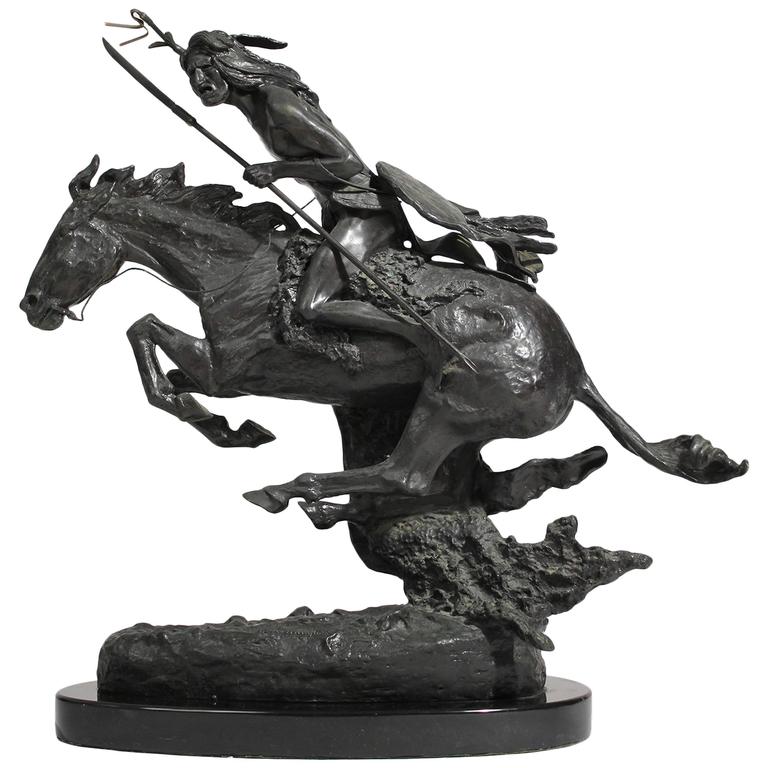

He lightened his palette and placed his colors as they would be affected by light. Later in his career, Remington experimented with the perception of color. Stirred by action, Remington designed his sculptures to feature movement-challenging the limits of the medium.

His bronze The Broncho Buster represents a human struggle to control nature, and has become a classic symbol of the American West. Remington succeeded in both two-dimensional and three-dimensional artworks. His success as an illustrator earned him the freedom to define his own themes, and he matured as an artist.įrederic Remington (1861 – 1909). Painting illustrations in black and white, such as The Mess Tent at Night, also guided him in controlling values, the degree of light and darkness. His illustrational drawings trained him to use line effectively. His drawings of cavalry troops, cowboys, and Indians filled popular periodicals such as Harper’s Weekly and Collier’s. His ranch and other business ventures in Kansas City, Missouri, being unsuccessful, Remington ended his only western residence and then traveled in the Southwest.īy the mid-1890s, Remington became one of the most popular and successful illustrators of the age. On October 1, 1884, he married Eva Adele Caten of Gloversville, New York. In 1883, he bought and worked a sheep ranch in Peabody, Kansas. In 1881, he made his first trip west to Montana Territory and subsequently sold his first sketch of cowboys to Harper’s Weekly. After his father died, he left school and started working as a reporter.įrederic Remington (1861 – 1909). Remington attended the Yale College School of the Fine Arts for three semesters beginning in 1878, and also played football on the Yale team. Born October 4, 1861, in Canton, New York, Frederic was the only child of Seth Pierre Remington and Clara Bascomb Sackrider Remington. In some of his best works, conflict was not only the subject, but also created the aesthetic tension of the artwork.Īlthough closely identified with the American West, Remington actually spent much of his life in the East. Remington’s subjects, the military, the cowboy, and the American Indian, centered on conflict. In both painting and sculpture, he portrayed the action and drama of the West. The art of Frederic Remington defined the American West during his lifetime and played a major role in creating the popular image of the West that persists today.

An enlarged version made in 1999 is displayed at Jonesboro, Arkansas.Frederic Remington in his New Rochelle studio, 1905. Bush, along with another Remington bronze The Bronco Buster. An example was sold by Christie's in 2009 for US$134,500, and another in 2011 for US$92,500Ī cast was displayed in the Oval Office by US Presidents Ronald Reagan and George H. An example is held by the Metropolitan Museum of Art which measures 58.7 by 45.1 by 36.8 centimetres (23.1 in × 17.8 in × 14.5 in), bequeathed by Jacob Ruppert in 1939. Around 100 authorised casts were made of the new version before 1921, but many unauthorised posthumous casts were made later by the Roman Bronze Works. The changes added about 4 inches (100 mm) to its height. The revisions increased the tension of its pose by changing the position of the horse's legs, tucking in its forelegs and straightening the rear legs, and also increased the fluid curvature of the piece by moving the rider's stance further forward. Over a period of ten days, Remington reworked the plaster model. Eleven bronzes had been cast from this first model, 20.5 inches (520 mm) high, by 1908, when Remington became dissatisfied with the original design. Remington completed a plaster model in January 1905, which was cast in bronze by the Roman Bronze Works using the lost wax process. The rider, with moustache and woolly chaps, leans forward, gripping the horse's mane with one hand and holding on to his hat with the other. The work depicts a cowboy riding a horse that is rearing up in fright, twisting away from a rattlesnake on the base. The bronze sculpture was one of Remington's most popular, after The Broncho Buster, and it has been described as Remington's own favorite sculpture. The Rattlesnake is an equestrian sculpture by American artist Frederic Remington. The Rattlesnake, Metropolitan Museum of Art


 0 kommentar(er)
0 kommentar(er)
